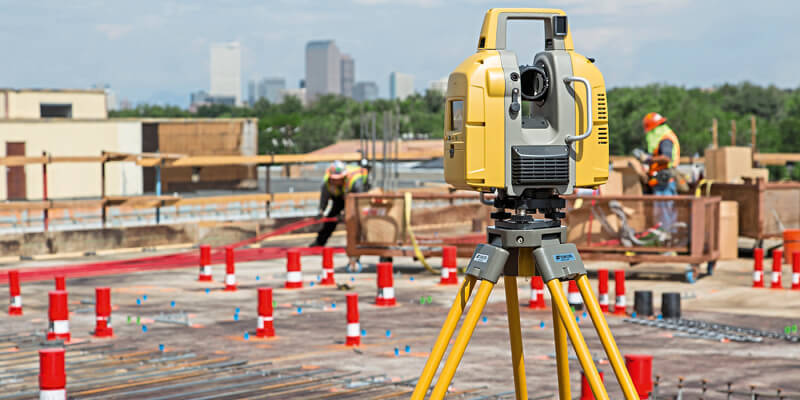As industry bounces back from the COVID-19 crisis, digital tools will be more important than ever to accelerate the recovery. How can laser scanning help? And what does the future hold for the technology? Levi Sookram-Brown scans the horizon

3D laser scanners have revolutionised surveying in the construction industry, enabling the creation of immersive and accurate 360-degree point clouds of any scanned area. With built-in cameras enabling true colour to be recorded in conjunction with coordinated points, the technology means that very dense, data rich point clouds can be captured with speed and efficiency.
Even so, the future of laser scanning hinges on addressing the key requirement of surveying professionals for ever more efficient and cost-effective instruments. With recent advances in laser scanning overcoming several significant challenges, the future, for some, has already arrived.
The need for speed
To satisfy the demands of modern industry, professionals require high-speed laser scanning solutions that don’t compromise on accuracy. As a result, contemporary laser scanning solutions such as Topcon’s GLS-2000 series (pictured above) have become regular fixtures on construction sites – providing simple and effective ways of capturing precise 3D point cloud data at high speed.
Nevertheless, since laser scanners work via a line of sight, multiple scans are usually required from various vantage points to guarantee a complete data set – and this can take a while to complete, especially in the processing stages. To streamline the process, manufacturers have responded with innovations that increase not only the speed of data capture, but also dramatically reduce the processing time and improve the quality of said data.
Using combined devices such as the Topcon GTL-1000 (a combined robotic total station and high-quality laser scanner), surveyors can speed-up both the data capture and processing elements. The device enables professionals to take measurements for surveys, set out from design drawings or models; collect rich scan data and, coupled with MAGNET® software, process and analyse 3D point clouds for verification analysis and as-build surveys - all using one single, high-speed instrument.
Living the dream
Finding solutions that are equally effective in environments where ageing and deteriorating structures are to be scanned can make the surveying task more challenging and time consuming. However, modern-day laser scanners offer levels of accuracy and versatility in situations which surveyors, hitherto, could only have dreamed.
Redeveloping historic and graded buildings is a case in point. Such structures are typically characterised by hard-to-reach areas that are disconnected and/or inaccessible. This, in turn, makes it harder to obtain accurate measurements or create a coherent survey using just a single sensor type.
However, when using the latest combined laser scanning technology, professionals can now introduce real-time registered scan data without needing multiple instruments and using just a single operator. The results have been very successful in reducing time and cost, as well as increasing the level of accuracy and detail available.
Bouncing back
Clearly, technology for the construction industry has evolved in leaps and bounds, with innovations in laser scanning, Augmented Reality, machine control and automation all helping to transform efficiency both on-site and in the office. However, the construction sector, like many others, now faces a huge challenge in bouncing back from the effects of the Covid-19 pandemic.
With the reduction in activity during lockdown, many businesses and projects have fallen behind schedule. Government experts now also predict that economic recession may be inevitable. Given this background, investment in construction projects will be important in jump-starting the economy and where innovative technology can really make a difference.
When it comes to enhancing performance, software has been developed to work in tandem with physical equipment such as laser scanners. For example, the GTL-1000, used in conjunction with ClearEdge3D Verity, can verify up to 99% of as-built construction accuracy in a fraction of the time it would traditionally take to spot check just 5%. This saves vast amounts of time, and will help projects get back on schedule after delays caused by the pandemic.
Combined instruments, such as the GTL-1000, which feature a high-quality laser scanner, identify issues long before on-site remedial costs are incurred, thus avoiding the ‘domino effect’ of incorrectly installed elements and service. It also improves efficiency by offering the right data at the right time. These benefits will not only help individual projects to get back on track but also greatly assist in the recovery of the wider economy.
Health and safety
While laser scanning technology improves accuracy and efficiency on projects, its use is also compatible with the non-contact health and safety requirements imposed by the pandemic.
As industry adjusts to the ‘new normal’, technology such as the GTL-1000 can help contractors adhere to social distancing guidelines. The instrument is fully operable by one person, and can even be remotely accessed and supported via TS Shield. The captured data can also give multiple users virtual access to spaces and locations without needing to physically occupy them.
Advances in robotic ‘one-man’ kits, e.g. Topcon’s self-levelling LN-150 layout tool and wearable technology such as its MAGNET Vision heads-up-display, all helps professionals comply with social distancing measures.
Technological advancements in 3D laser scanning have guaranteed that industry will continue to recognise its benefits in the field. And in adjusting to changes caused by the COVID-19 pandemic, innovative technology will be crucial to the industry’s recovery.
By improving speed, accuracy and efficiency, advanced technology will help accelerate bounce back. Likewise, technology that enables remote working will facilitate the resumption of stalled projects without being unduly impacted by social distancing.
Levi Sookram-Brown is business development manager at Topcon Positioning GB (https://www.topconpositioning.com/gb/)


